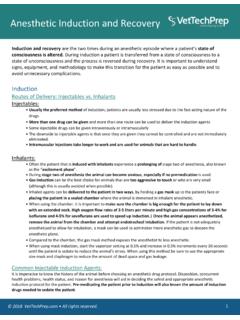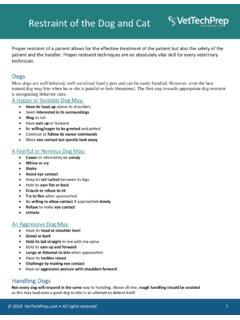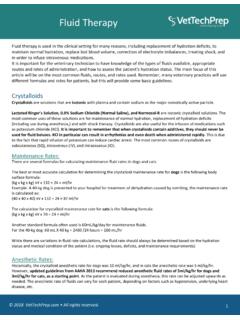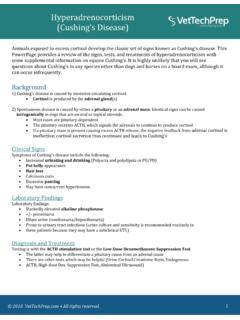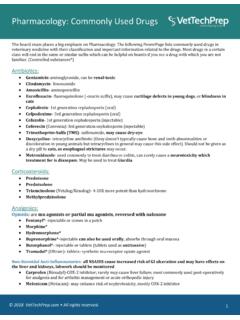Transcription of Canine Parvovirus Rabies - VetTechPrep.com
1 Canine Parvovirus Rabies is a very serious and deadly zoonotic disease. Veterinary technicians will be asked questions about Rabies transmission. You should expect questions about this topic on your board exam. Key Points Behavior change and/or vocalization are key signs that should lead you to think about Rabies Reportable disease Specific testing and quarantine rules apply for animals exposed to Rabies or that bite humans Relevant Background There are various reservoirs for the disease, primarily wildlife. Most human Rabies cases come from bats. Indoor and outdoor animals are at risk. Clinical Signs Behavior change or vocalization are the 2 major signs o Examples of behavior changes include aggressiveness, excitability or irritability, hiding (wild animals may become less fearful of humans) May see lameness May be acute or progressive signs The disease may remain asymptomatic for 1-2 months The dumb and furious forms of the disease may only be present in the terminal stages o Furious form - Animals become anxious and aggressive.
2 Progresses to seizures or paralysis o Dumb form - Hypersalivation and difficulty swallowing Diagnosis The Direct Fluorescent Antibody Test detects viral antigens and should be tested on two locations from the brain (brain stem and cerebellum) and is the test of choice for Rabies diagnosis. Management of Bites Exposed unvaccinated pets: o Euthanasia and testing OR o Quarantine for 6 months AND vaccinate 1 month prior to release Exposed and currently vaccinated pets: o 45-day Observation AND immediate revaccination Exposed and previously vaccinated pets (but that have an expired or outdated Rabies vaccine status): o 45-day Observation AND immediate revaccination Exposed humans: o Post exposure prophylaxis with Rabies immunoglobulin AND o Vaccinate at 0 and 3 days o If a pet animal bit a human, it must be quarantined for 10 days or euthanized for Rabies testing References: Ettinger and Feldman- Textbook of Veterinary Internal Medicine 5th ed Centers for disease control (CDC) website, Rabies Compendium of Animals Rabies Prevention and Control 2016.
3 J Am Vet Med Assoc 2016; 248:505-517 2018 All rights reserved. 1 Rabies
